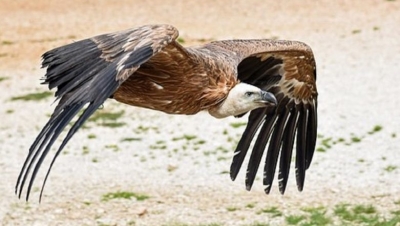
Mia, a bearded vulture, is the world’s first bird to get a prosthetic foot. In large birds, the loss of a limb results in the inability to walk and ultimately leads to death from malnutrition. A detachable prosthesis for avian limbs is unsuitable given the extreme loads. They have to withstand in daily use. For the first time, a technique known as osseointegration (direct skeletal attachment) was used on a vulture, and a custom implant mounted directly into Mia’s leg bone. It can now land and walk using both feet, making it the first ‘bionic bird”.
A team of veterinarians, led by Sarah Hochgeschurz of the University of Veterinary Medicine, Vienna, contacted Aszmann for help. Aszmann is an expert in limb reconstruction, but such a procedure had never been performed on a bird.
Designing a prosthetic limb for a predatory bird presented a number of unique challenges. A detachable prosthetic would not have been durable enough to withstand the daily punishment a raptor would subject it to. Any prosthesis would have to be able to not only grip prey but also withstand the shock of such a big bird landing.
So the team designed Mia a custom implant that would be mounted directly into the leg bone.
Using a technique called osseointegration, the surgeons installed a metal anchor into Mia’s leg bone where her ankle used to attach. Over time, the bone grows into the metal threads on the anchor, “integrating” the metal rod into Mia’s skeleton.
The team then attached her prosthesis to the anchor. Instead of being shaped like an artificial bird foot, the vulture’s bionic leg is a black rubber cylinder that makes Mia look like she accidentally stepped on a sushi roll. It’s designed to allow Mia to grip both surfaces and prey but also to act as a shock absorber for softer landings. The cylindrical design is intended to minimize the potential of her twisting and damaging her leg when it got caught on branches, and the metal anchor integrated into the bone will provide Mia a high level of tactile feedback, Aszmann said. The team described the procedure in a study published June 11 in the journal Scientific Reports.
The surgery required anesthetizing Mia for more than two hours but it was a success.
Credit : Live Science
Picture Credit : Google




